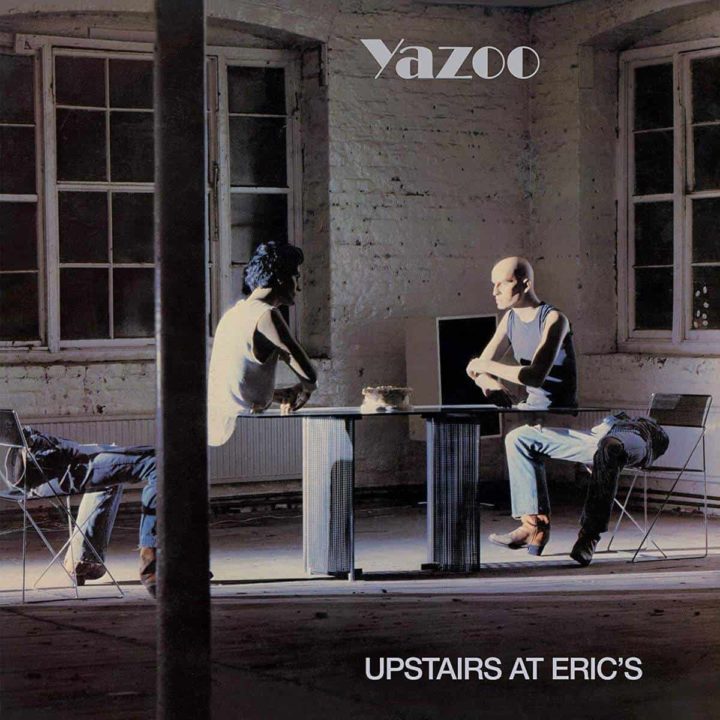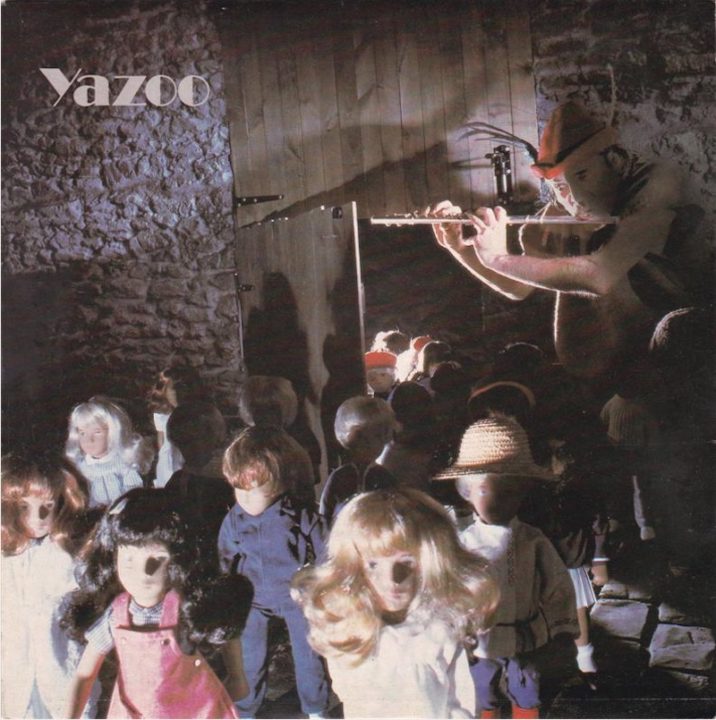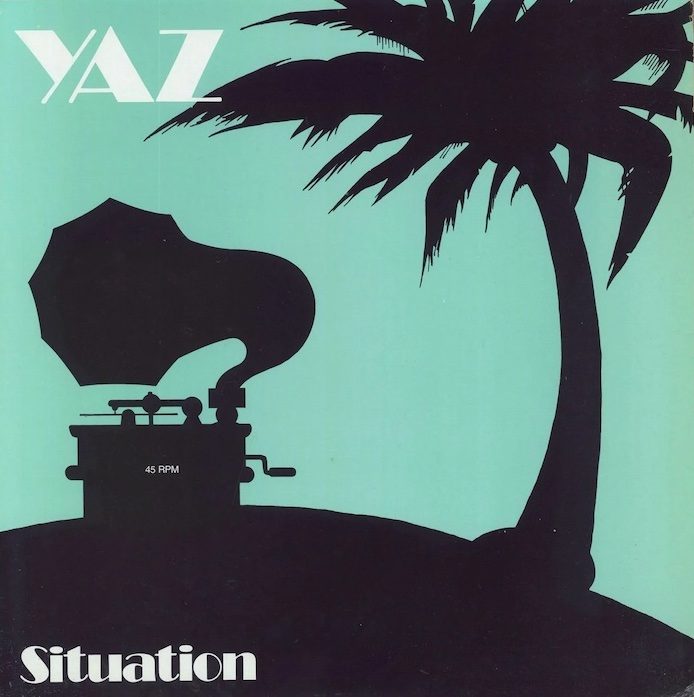
How an opportunistic meeting of a pop prophet in waiting and a fledgling powerhouse vocalist led to Upstairs At Eric’s – a stripped-back synth-pop masterclass that remains timeless
A helping of creative tension is often at the heart of great studio albums, but that rather misses the truth behind Upstairs At Eric’s straight-out-of-the-box success. Vince Clarke and Alison Moyet brought two very different qualities to Yazoo’s debut – and it’s those remarkable attributes that account for the record’s legacy rather than any competitive frisson driving each of them on to greater artistic heights.
Clarke was a rapidly improving young songwriter with an inherent melodic chart-friendly sensibility. Moyet, meanwhile, supplied the soul and added emotional resonance to the material. Both brought a steely determinism and ambition to succeed to the table. In the end, this most unlikely of “arranged marriages” – as Alison later called it – was doomed to splinter and break apart, but not before they lit up the pop world like a firework during their all-too brief working partnership.
The instant success of Yazoo’s debut 7″ Only You – it made No.2 in the UK singles chart – meant there was no time for reflection when recording a LP. “It was very fast, yeah,” Clarke told Classic Pop in 2013. “Not that we rushed it – it was more that there was no self-indulgence, no space for messing around with it at all.”
Still a novice in the music business with a less-than-packed contacts book, Clarke’s only thought for recording an album was to return to Mute’s favoured Blackwing Studios, the South London facility where Depeche Mode had laid down their debut.
Synth-pop Masterclass
Initial recording plans hardly ran smoothly. First-choice producer Daniel Miller was unavailable to work on Yazoo’s debut, and fellow Mute act Fad Gadget had booked out Blackwing during the day, leaving Clarke and Moyet just the scraps of early morning sessions running from 5am to 11am to work with. The studio’s Eric Radcliffe was on hand to oversee most of the sessions; later, when the facility became too fully booked to accommodate Clarke and Moyet at all, he built a studio at his house in just 10 days to complete the recording of the album.
As it turned out, Radcliffe played a key part in moulding what became Yazoo’s sonic trademarks. “We often combined more than one [device] to create a sound,” he explained. “One particular one that sticks in my memory is the snare-drum sound on Don’t Go… I did that using the Lexicon 224 and 224x [reverbs] ganged together. We came across that sound entirely by accident – but then again, in the final analysis, I think that you discover almost everything by accident, just by fiddling around.”
Blackwing boasted a large control room packed with synths and was housed inside the deconsecrated remains of All Hallows Church in south-east London. The master tapes from Blackwing’s recording sessions were stored in what was formerly the church’s bell tower, a section that was partly destroyed in the Blitz of 1941. Artists at Blackwing also benefitted from natural reverb created by recording in a long corridor which retained the original stonework from the war-ravaged building, as well as an echo chamber situated under the main roof of the church.
Only You
Radcliffe was careful, though, not to let the sonorous surroundings at Blackwing impinge too much on the job at hand. In a 1984 interview with Electronics & Music Maker magazine in 1984 he explained: “The danger of applying too much reverb is that if everything is saturated in it, you tend to get a lack of contrast and dynamics in the music, because the reverb fills the spaces that the notes leave. The result is a chaotic, saturated sound. I think the technical term is ‘entropy’: an increase in chaos.”
The resultant album, Upstairs At Eric’s, is arguably the most impressive example of Clarke’s pure pop sensibility mixed with more experimental urges. Chart-friendly electro-pop bangers rub shoulders with mournful, downbeat synth ballads as well as cut-and-paste spoken word oddities.
Despite Blackwing offering a 32-track recording facility – Radcliffe locked together two Soundcraft 16-track machines at the studio – a feature of Upstairs At Eric’s is its stripped-back sparsity, partly due to Clarke’s lack of technical ability at the time. He told The Quietus in 2012: “I guess it was pretty different sounding to anything else at that time. I don’t think that we felt we were the forerunners or pioneers of anything, we were just making music. The whole period, in all music, was incredibly exciting – when you don’t know anything, everything seems wonderful.”
Vince Clarke may now own an impressive arsenal of synths but in Yazoo’s first phase his sonic arsenal was limited to a Roland Jupiter 4, a Sequential Pro One monosynth, a Roland MC-4 Microcomposer for sequencing and a Roland TR-808 drum machine.
Ice-cold Landscapes
Though the technology was minimal, Upstairs At Eric’s is a showcase for Clarke’s ear for hooky melodies, evocative ice-cold synth landscapes and Moyet’s extraordinarily emotive vocals. The pair’s working relationship was matter-of-fact and stand-offish – Clarke would preview songs to Moyet on guitar and the singer would arrange the melody and lyrics as she saw fit. Likewise, when Alison brought her own material to the table, Vince would work out a synth arrangement independently. This was not a working relationship that featured endless debates about musical direction; the fractured mannequins that featured on the album’s cover shot by photographer Joe Lyons at his studio in North London are a prescient interpretation of the disconnect between the duo.
The album opener Don’t Go is quite irresistible with its clattering drums, that instant earworm synth lead line and a roaring Moyet in gut-wrenching form on a tale of pleading love (“Love just like an addiction/ Now I’m hooked on you”). As an initial statement of intent, you’ll rarely hear anything better and there’s a glistening simplicity to the delicate Too Pieces that follows, a slight, illusive tale of loneliness.
One of the album’s few frothy moments is Bad Connection – the irony for this most uncommunicative of working partnerships was lost on no one. Moyet brings commitment and emotion to the lyrics, but it’s unusual to hear her front what amounts to little more than throwaway pop. Clarke’s kitchen sink drama Tuesday shows a more serious side to his lyric writing and Moyet wrings every last drop of emotion from it.
Gothic Melodrama
Yet it’s Alison’s self-penned tracks that bring much of the soulful gravitas to the album via the bluesy howl of heartbreak on Midnight and the wonderfully sinister atmospherics of Gothic melodrama Winter Kills. The punchy Goodbye 70s changes gear as Moyet bristles with disillusionment about how the punk dream had evaporated and had become just another fashion-oriented passing trend.
While Clarke had an affinity for creating pop earworms, Upstairs At Eric’s also features two cuts that exhibit his more experimental tendencies – the Lord’s Prayer-quoting In My Room and the cut-and-paste vocal soundscape of I Before E Except After C, Yazoo’s own Revolution #9 that featured Clarke, Moyet and producer Eric Radcliffe’s mother reading out the text from studio equipment manuals.
Yazoo’s trademark song Only You is nestled as the opening track on the album’s second side, an indelible 80s classic of yet more heartbreak. It’s arguably the duo’s most pristine example of the electro-soul sound that became their trademark.
Bookended By Bangers
Upstairs… is an album bookended by bangers – Bring Your Love Down (Didn’t I) closes the record on a feisty, confrontational note with Moyet on combative form (“You play your games but the fact remains/ I’m the only one that can hold your reins”).
When the LP was released in the US, the duo’s record label baulked at their squandering of the sensational remix of Situation. The track was already a No.1 on the Billboard Hot Dance Club Play chart in the States but it had been almost thrown away as Only You’s B-side in the UK. The US incarnation of the album subsequently dropped the sombre Tuesday to make way for the superior reworking of Situation, a rare case where commercial considerations trumped artistic urges. It was a wise move, and vastly improved the album’s tracklisting.
Upstairs At Eric’s would become a byword for a well-matched union of the organic and the synthetic; a new brave world of synth blues, as Clarke explained to The Quietus. “I think that’s how it turned out, but it wasn’t how we planned it,” he mused. “I suppose at the time there were quite a lot of bands that sounded like robots – which I loved – so I guess we were doing something a bit different. However, the Eurythmics were also trying to capture that soul-meets-electronic kind of sound.”
Rich, Dark Passion
UK weekly Melody Maker was full of praise for the completed Upstairs At Eric’s, hailing it as “an album of rich, dark passion, forever burying the hoary old moan that electronics and synthesizers will never be any good because they don’t have a button on the front that says ‘emotion’.”
Although it made No.6 in the NME’s critic’s list of the year, the paper’s Lynn Hanna gave a more mixed reaction upon its release: “It’s an LP of trial and some error, and shows all the signs of a collaboration that’s still in a promising infancy. The writing is divided almost equally between the two, and at their best, each acts as an excellent foil to the other. A little too often, though, this LP speaks of two disparate pasts rather than one new Yazoo facing the future.”
Upstairs At Eric’s was an immediate chart success in the UK. Like the 7″ of Only You it would reach No.2 in the charts on home soil, selling more than 300,000 copies in the process. With Situation nestling in its tracklisting, quite why it only just scraped into the US Top 100 remains a mystery. The troubled You And Me Both would follow, but this first fractured union would remain Yazoo’s most accomplished creation.
Listen on Spotify here
Read More: Top 40 80s debut albums
Classic Pop may earn commission from the links on this page, but we only feature products we think you will enjoy.





